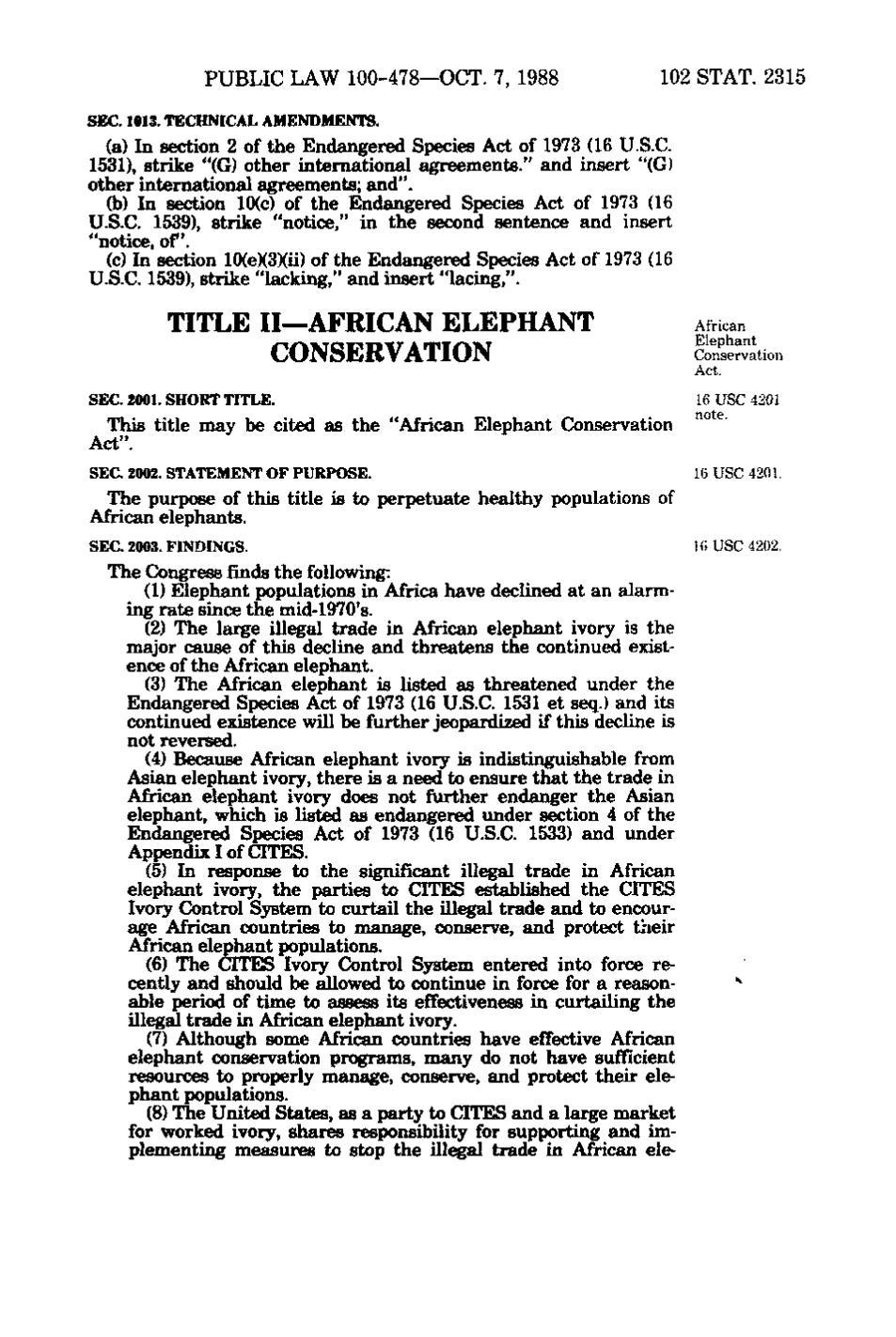PUBLIC LAW 100-478—OCT. 7, 1988
102 STAT. 2315
SEC. 1013. TECHNICAL AMENDMENTS.
(a) In section 2 of the Endangered Species Act of 1973 (16 U.S.C. 1531), strike "(G) other international agreements," and insert "(G) other international agreements; and". (b) In section ICKc) of the Endangered Species Act of 1973 (16 U.S.C. 1539), strike "notice," in the second sentence and insert "notice, of. (c) In section 10(e)(3)(ii) of the Endangered Species Act of 1973 (16 U.S.C. 1539), strike "lacking," and insert "lacing,".
TITLE II—AFRICAN ELEPHANT CONSERVATION
African cSvlion Act.
SEC. 2001. SHORT TITLE.
16 USC 4201
This title may be cited as the "African Elephant (Donservation Act". SEC. 2002. STATEMENT OF PURPOSE.
16 USC 4201.
The purpose of this title is to perpetuate healthy populations of African elephants. SEC. 2003. FINDINGS.
The Congress finds the following: (1) Elephant populations in Africa have declined at an alarming rate since the mid-1970's. (2) The large illegal trade in African elephant ivory is the major cause of this decline and threatens the continued existence of the African elephant. (3) The African elephant is listed as threatened under the Endangered Species Act of 1973 (16 U.S.C. 1531 et seq.) and its continued existence will be further jeopardized if this decline is not reversed. (4) Because African elephant ivory is indistinguishable from Asian elephant ivory, there is a need to ensure that the trade in African elephant ivory does not further endanger the Asian elephant, which is listed as endangered under section 4 of the Endangered Species Act of 1973 (16 U.S.C. 1533) and under Appendix I of CITES. (5) In response to the significant illegal trade in African elephant ivory, the parties to CITES established the CITES Ivory Control System to curtail the illegal trade and to encourage African countries to manage, conserve, and protect their African elephant populations. (6) The CITES Ivory Control System entered into force recently and should be allowed to continue in force for a reasonable period of time to assess its effectiveness in curtailing the illegal trade in African elephant ivory. (7) Although some African countries have effective African elephant conservation programs, many do not have sufficient resources to properly manage, conserve, and protect their elephant populations. (8) The United States, as a party to CITEIS and a large market for worked ivory, shares responsibility for supporting and implementing measures to stop the illegal trade in African ele-
16 USC 4202.
" ^
�
